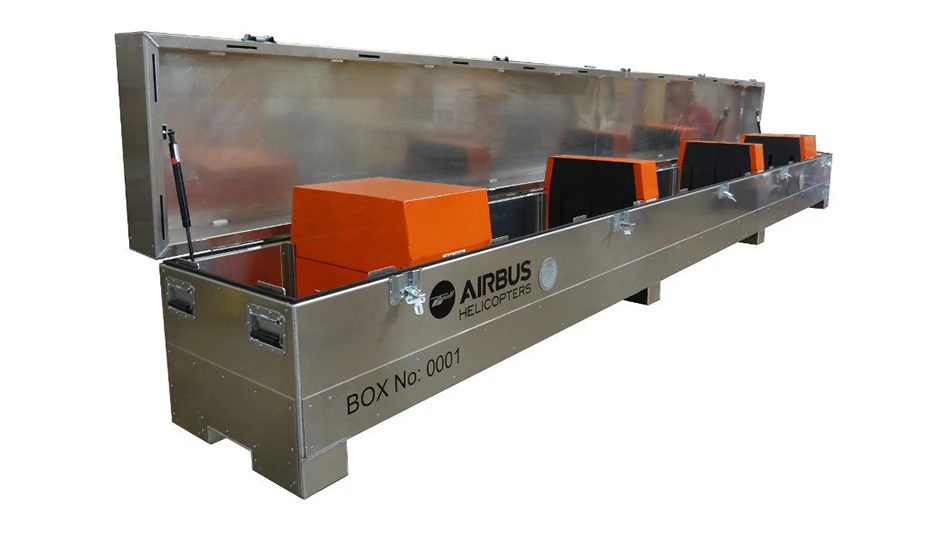
Boeing
RTX has been selected by Boeing as a collaborator on the X-66A flight demonstrator, part of NASA's Sustainable Flight Demonstrator project. Two RTX business units, Pratt & Whitney and Collins Aerospace, will support Boeing with Pratt & Whitney GTF engines, and Collins nacelles and engine accessories. Pratt & Whitney and Collins will also support ground and flight tests, slated to start in 2028.
The Sustainable Flight Demonstrator is part of NASA's broader Sustainable Flight National Partnership, which is dedicated to developing the technologies needed to achieve net-zero CO2 emissions for commercial aviation. Boeing's X-66A program is focused on developing the Transonic Truss-Braced Wing (TTBW) concept, which could enable significant improvements in fuel efficiency and reduced emissions for next generation single-aisle aircraft.
"NASA's Sustainable Flight Demonstrator is a leading example of how public-private partnerships can help foster the technological breakthroughs needed to deliver on the industry-wide goal of a more sustainable, net-zero emissions future," said Geoff Hunt, senior vice president of Engineering & Technology at Pratt & Whitney. "We'll work with Boeing to apply GTF engines to the X-66A and help demonstrate the potential of its pioneering truss-braced wing design."
The GTF engine, with its revolutionary geared fan architecture, offers fuel efficiency and sustainability benefits for single-aisle aircraft. With up to 20% better fuel efficiency, GTF engines have helped airlines save more than 1.4 billion gallons of fuel and more than 14 million metric tons of CO2 emissions since entering service in 2016. GTF engines are certified to operate with sustainable aviation fuel (SAF) and offer up to a 75% reduction in aircraft noise footprint compared to previous generation engines.
"Collins has a long history of successful partnerships with NASA, Boeing, and Pratt & Whitney, with decades of experience pushing the boundaries of innovation in aerospace," said Dr. Mauro Atalla, senior vice president, Engineering & Technology for Collins. "Now, as part of the Sustainable Flight Demonstrator program, we will work together to demonstrate new technologies and systems to support the next generation of low-emission single-aisle aircraft that will play an integral role in reducing the environmental footprint of the aviation industry."
Collins' nacelles consist of lightweight and durable composite and metallic materials that encase the engine and serve many functions, including safeguarding the engine, controlling airflow, reducing noise, and facilitating thrust reversal for deceleration during aircraft landings. In addition, Collins provides the control system components for the GTF engine, including heat exchangers, the integrated fuel pump and control, the air turbine starter, and electronic controls.
"The learnings from the Sustainable Flight Demonstrator, X-66, and the partnership with NASA are important elements in the industry's efforts to decarbonize aviation," said Dr. Todd Citron, Boeing's Chief Technology Officer. "We're grateful for the support from RTX on this critical effort."
RTX is advancing a wide range of technologies to support the future of sustainable aviation, including engine readiness for unblended 100% SAF, hybrid-electric propulsion and hydrogen fuel. Pratt & Whitney and Collins are also collaborating with NASA on other Sustainable Flight National Partnership projects, including Hybrid Thermally Efficient Core (HyTEC) and Hi-Rate Composite Aircraft Manufacturing (HiCAM).
Latest from Aerospace Manufacturing and Design
- Boeing to build US Air Force’s sixth-generation fighter jet
- Sandvik Coromant introduces CoroMill Plura barrel
- #54 - Manufacturing Matters - HMI Solutions for EV Industry from EAO
- Aerospace Industry Outlook returns for spring 2025
- Drop in for an interactive webinar on automation in manufacturing
- SW’s wing rib technology for the aerospace industry
- Mach Industries launches Mach Propulsion
- Murata Machinery USA's MT1065EX twin-spindle CNC turning center





